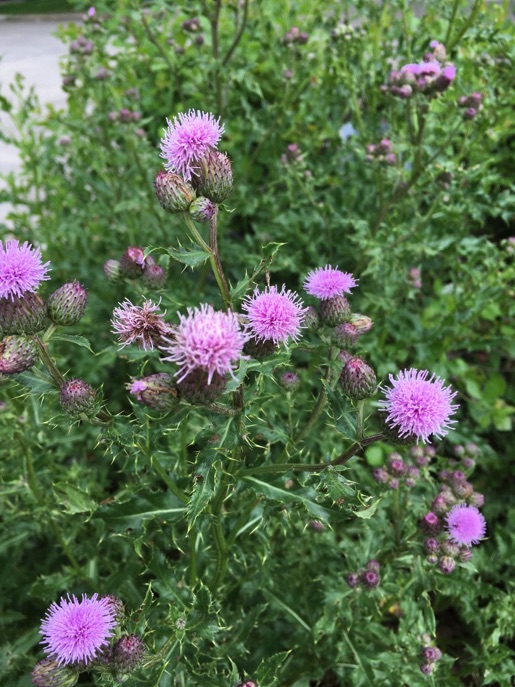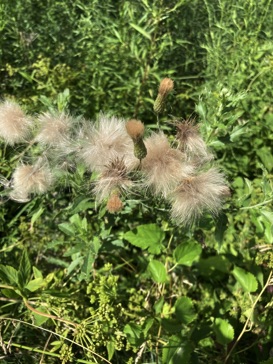Canada Thistle
Cirsium arvense

This common thistle is distinguished by its small, profuse lavendar blooms, usually about 5/8 inch across. The leaves are usually about 3-4 inches in length (may be longer near the base, smaller ascending), roughly lance-shaped with a marked central vein, indented or toothed on the sides, and armed with whitish spines on the edges. After blooming, the floral heads produce many seeds that are carried abroad on the wind by attached pappus (see picture below).
Despite its name, this is an alien species, originally from western Eurasia, with no connection to Canada. It is fairly attractive in bloom, but a serious invasive because unlike other thistles it is a perennial and spreads through extension of horizontal roots which then send up new shoots, forming dense colonies that can choke out other plants. In England, it is generally called Creeping Thistle; in the Americas, it has over a dozen popular names, not all of them flattering. It is sometimes confusingly called Field Thistle, which is usually reserved for C. discolor.
1-4 feet, sun.
Summer (June-September).
The pappus or fluff to carry seed of Canada Thistle after blooming.
23 July 2020.
Canada Thistle, 13 June 2020.
The basal rosette of leaves of Canada Thistle in early spring. (The blue color is residue of herbicide applied by Park District staff in an effort to control this invasive plant.)
14 April 2021.
